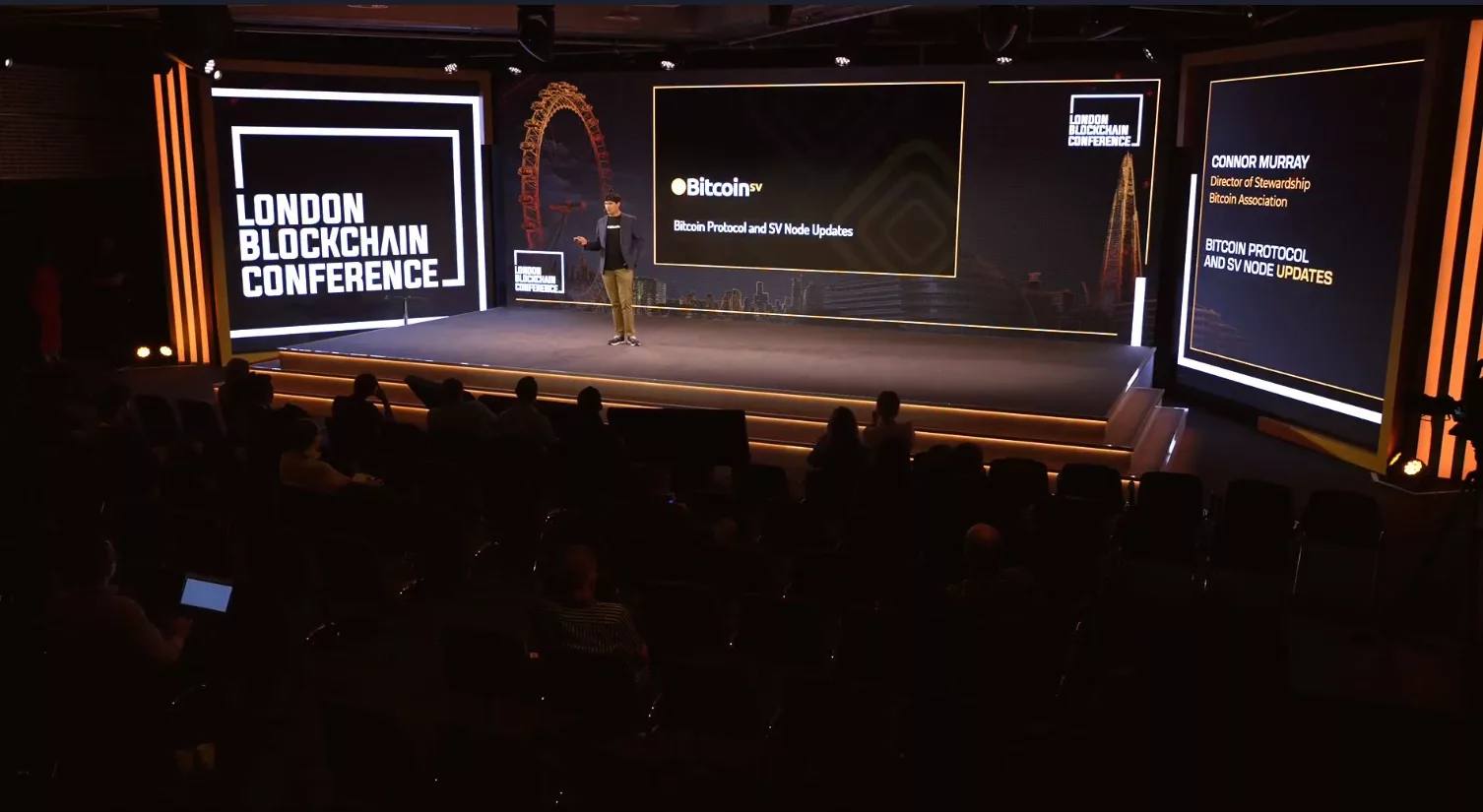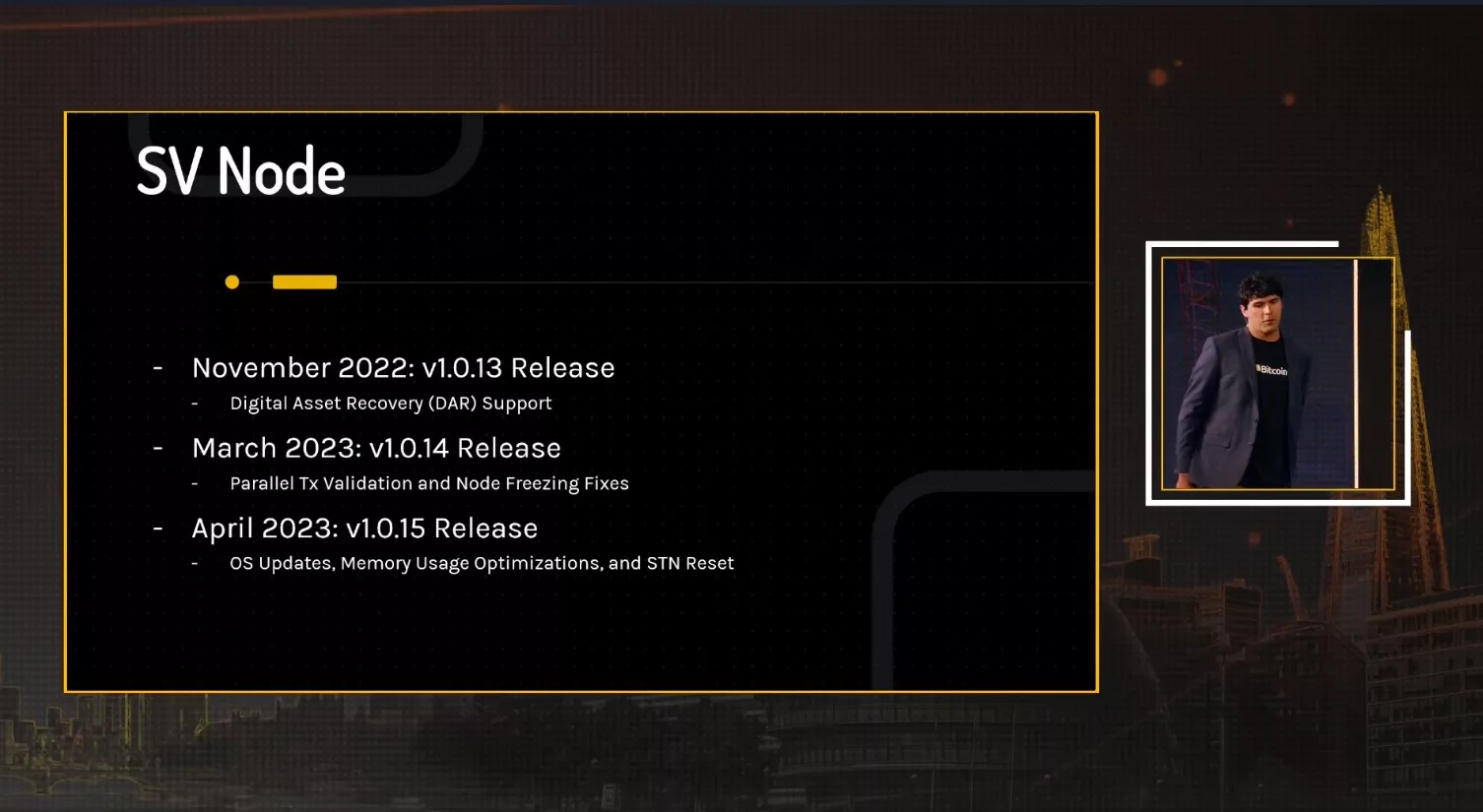|
Getting your Trinity Audio player ready...
|
Over the years, the original Bitcoin protocol, as designed by Satoshi Nakamoto, has been subverted and built upon, but the time has come for full restoration. On Day 3 at the London Blockchain Conference, Connor Murray delved into the latest protocol and SV node updates, including miners offering a portion of the transactions for free.
“Over the past six months, we at the Bitcoin Association have been planning to publicize what the Bitcoin protocol is. Ultimately, what we want to do is enable anyone to build a competing node software,” Connor, the founder of BSV blockchain-powered reviews platform Britevue, told the audience at the technical stage.

On updates, Connor revealed that the three most critical upcoming features are the alert key mechanism, support for free transactions, and full protocol restoration.
1. Alert-key Mechanism
The alert key mechanism was first implemented by Satoshi in 2010 after the value overflow incident in which a bug led to the creation of an extra 184.5 billion bitcoins for three different addresses.
The alert key mechanism—the name could change according to Connor—will be restored to alert nodes in the case of bugs or massive hash rates being directed to the BSV blockchain for malicious attacks. It will allow BA to send signed messages over the peer-to-peer network and prevent chain splits. It will also enable an easy digital asset recovery (DAR) mechanism.
“…we won’t have to rely on these third-party components for communicating with the network. Instead, we can do this over the peer-to-peer network, which we already use to communicate,” he said.
2. Free Transactions
Free transactions were allowed and encouraged in the early days of Bitcoin, Connor told the audience. While transaction fees are critical to incentivize miners for the security of the Bitcoin network, free transactions still have a role to play today.
Today in BSV blockchain, “we have a lot of extra block space. The difference for miners processing a 10 MB block vs. a 200 MB block is almost negligible. We want to provide the ability for miners to set aside a size of transactions that they will allow for free,” Connor told the audience.

He believes these free transactions will encourage businesses, users, and developers to try their hand at Bitcoin as they won’t have to pay a cent.
To allow for free transactions, the BSV Blockchain Association will create a separate Mempool, which will be deprioritized. As such, the free transactions in this Mempool will take much longer before they are processed and validated. Users who want more speed can opt out of this Mempool and pay the transaction fees.
The BSV Blockchain Association will publish a transaction template for the free transactions over the next few weeks, he revealed.
3. Protocol Restoration Items
While the BSV blockchain is a restoration of the original Bitcoin protocol as Satoshi designed it 15 years ago, a few key pieces still have yet to be restored. This includes some opcodes like OP_VER, which pushes version numbers to the stack. OP_VER was among the pieces that missed out on the Genesis update but will be integrated in the near future. One benefit of OP_VER is it will allow developers to build overlay networks.
BSV Blockchain Association will also remove the clean stack requirement. Currently, a stack must be empty for a script to be valid, unlike in the original Bitcoin protocol, which allowed flow from one script to another.

Another upcoming key update is allowing opcodes in unlocking scripts. Currently, the protocol pushes everything in the unlocking script to push data. This can be a challenge for users trying to unlock coins locked to a public key. This update will also allow more innovative applications like doing computations on the unlocking script.
Restoring the original difficulty adjustment algorithm (DAA) is also in the pipeline. Initially, Bitcoin mining difficulty would adjust every 2,016 blocks. After the BCH split, the difficulty adjustment became dynamic.
BCH developers also added a flag to the signature algorithm so that a signature on BCH wouldn’t be valid on the BTC chain. BSV blockchain carried on with SIGHASH_FORKID, but the time has come to axe it and return to the original protocol, Connor pointed out.
Watch London Blockchain Conference 2023: Conference Highlights

 07-15-2025
07-15-2025 





